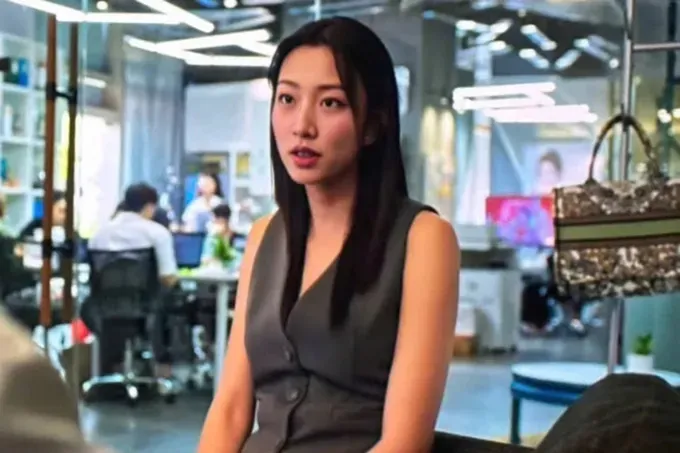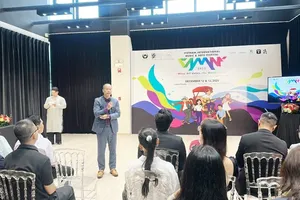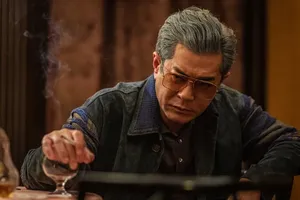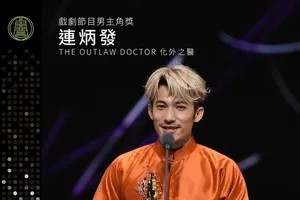Chot Don (Deal) has become the first Vietnamese film to fully replace its female lead's image using AI—a groundbreaking move prompted by the actress's current legal troubles.

This marks a rare and notable precedent in Vietnamese cinema.
While the true audience response will only become clear upon the film’s official release, the use of AI has undeniably opened a new chapter for the industry, despite lingering skepticism and debate.
At a recent press conference in Ho Chi Minh City, co-director Namcito revealed that the idea to utilize AI came from General Director Dinh Thi Thanh Huong of Galaxy Studio and the film’s Production Director.
Co-director Namcito revealed that initially, Bao Nhan and he were hesitant. They assumed AI would look artificial and emotionless but when they received test versions from the partnering tech companies, they were truly surprised as the technology has advanced far beyond what they expected it was able to preserve a surprising levels of emotion and naturalness.
According to founder of Lumination Hang Minh Loi, which serves as the technology support unit for the film, this represents a groundbreaking step, paving the way for new applications of AI technology in Vietnamese cinema.
To manage the replacement of the main character's image in the film, Mr. Hang Minh Loi stated that, in addition to essential technologies such as digital voice, digital human, and large language data processing, Lumination has also developed consistent character technology to maintain the uniformity of the character's image across various contexts.
Experts have noted that the film crew's decision to utilize AI for the complete replacement of the image of the character portrayed by Nguyen Thuc Thuy Tien is somewhat audacious and carries risks. However, it may also be regarded as the most viable solution following the legal troubles faced by the film's female lead, which led to her being boycotted by audiences. Previously, the film had to repeatedly delay its release date and even confronted the possibility of not being screened in theaters.
Meanwhile, production director Dinh Thi Thanh Huong acknowledged that the crew had contemplated abandoning the project due to the financial impracticality of re-shooting scenes with Thuy Tien.
Cases like Chot Don are not new in global cinema. In 2015, following Paul Walker’s sudden passing during the production of Fast & Furious 7, the filmmakers relied on CGI and four stunt doubles to recreate his presence on screen. In Casino (2022), Korean actor Choi Min-sik—then in his 60s—was digitally “de-aged” to appear as a 30-year-old.
Yet despite such advances, debates around the use of AI in film remain unresolved, particularly concerning legal, ethical, and artistic implications. Executive Director of SAG-AFTRA (USA) Duncan Crabtree-Ireland has warned that the core issue isn’t the technology itself, but how it’s applied. He stressed that artists must retain control over the use of their likeness, voice, and image—and receive fair compensation.
From another angle, Korean critic Kim Hern-sik argues that while deepfake technology may offer cost-saving benefits for independent or low-budget productions, it risks sidelining new talent and limiting creative exploration over time.
Regarding Chot Don, Vietnamese critic Tuan Larlame notes that using AI to alter an actor’s face for theatrical release is bound to raise questions—not only about legal and ethical boundaries, but also whether AI can truly capture the soul of a character. On the legal front, the film’s producers clarified that they didn’t merely replace a face, but created an entirely new character, thereby avoiding infringement on personal rights. The film has been approved for distribution with a T16 rating which means that it is just suitable for audiences aged 16 and above.
Ultimately, the integration of AI and new technologies in cinema is an inevitable and necessary evolution. The key lies in how it's implemented to reduce costs while preserving emotional depth, cinematic quality, and most importantly, the creative vision of filmmakers. Technology, no matter how advanced, must remain a tool -not a substitute -for human artistry.
























